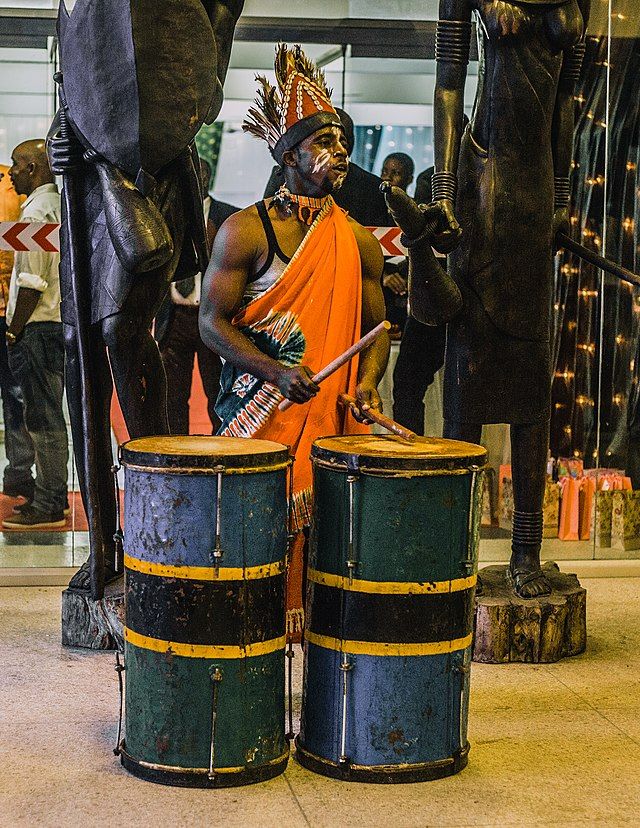East African Countries and Culture

East African culture is characterized by its diversity and deep historical roots. Across countries like Kenya, Tanzania, Uganda, Ethiopia, and others, cultural traditions are melded into everyday life. Music and dance play integral roles, with rhythmic beats and graceful movements that blend indigenous rhythms, Arabic influences, and modern interpretations. Traditional ceremonies and rituals celebrate milestones and seasons, while culinary delights such as spicy stews, grilled meats, and staple foods like ugali and injera provide a taste of local flavors.
Artistry thrives in the intricate designs of textiles and crafts, often telling stories of ancestry and community. Religion and spirituality, ranging from Christianity and Islam to indigenous beliefs, add further layers to the cultural dynamic, influencing social norms and personal identities. East African culture continues to evolve amidst the currents of globalization, preserving its essence while embracing new influences from around the world.
Burundi's culture is influenced by its diverse ethnic groups, including the Hutu, Tutsi, and Twa. Traditional drumming, dance, and storytelling are integral parts of Burundian culture, reflecting communal values and social cohesion. The country is also known for its thriving textile industry, producing intricately woven fabrics such as the imigongo.
Comoros is characterized by its blend of African, Arab, and Malagasy influences. The culture of Comoros is deeply rooted in Islam, with mosques and Quranic schools playing central roles in society. Traditional music, dance, and cuisine such as Langouste à la vanille, also reflect the island nation's cultural heritage, with influences from African, Arab, and French traditions.
Djibouti's culture is influenced by its strategic location at the crossroads of Africa, the Middle East, and Asia. The country is home to diverse ethnic groups that include the Afar, Issa, and Somali. Traditional Somali poetry, known as gabay, and Afar music and dance are important cultural expressions in Djibouti. The country's cuisine features dishes such as skoudehkaris (rice with meat) and lahoh (pancake-like bread).
Eritrean culture is characterized by ethnic groups that include the Tigrinya, Tigre, and Saho. Traditional Eritrean music, dance, and cuisine vary across regions, with influences from neighboring Ethiopia and Sudan. Coffee ceremonies, where freshly roasted coffee is served to guests, are an integral part of Eritrean hospitality and social gatherings.
Ethiopia is renowned for its ancient history, cultural traditions, and diverse ethnic groups. The country's culture is deeply rooted in Orthodox Christianity, Islam, and indigenous beliefs. Traditional Ethiopian music, such as the melodies of the krar (lyre) and the rhythmic beats of the kebero (drum), are central to Ethiopian cultural expression. The Ethiopian coffee ceremony is seen as a cherished social ritual, symbolizing hospitality and community.
Kenya's culture is characterized by its diverse ethnic groups that include the Kikuyu, Luo, and Maasai. Traditional music, dance, and storytelling are integral parts of Kenyan culture, with each ethnic group contributing its unique artistic expressions. Whereas the country's cuisine reflects its multicultural heritage, with dishes such as nyama choma (grilled meat) and ugali (maize porridge) being popular staples.

Mauritian culture is a fusion of African, Asian, European, and Creole influences, reflecting the island nation's multicultural society. Traditional Sega music and dance, originating from enslaved African people, are central to the Mauritian cultural identity. The cuisine of Mauritius is diverse and flavorful, featuring dishes such as rougaille (spicy tomato stew) and gateau piment (chili cakes).
Rwanda's culture is characterized by its unique blend of traditions, with influences from the Hutu, Tutsi, and Twa ethnic groups. Traditional Rwandan dance, such as the Intore dance performed by skilled warriors, is a lively expression of Rwandan cultural heritage. The country's cuisine features dishes such as brochettes (grilled meat skewers) and igisheke (cassava and bean stew).
The culture in Seychelles is a melting pot of influences from Africa, Asia, and Europe, reflecting the island nation's diverse history. Traditional Creole music and dance are central to Seychellois cultural identity, with rhythms and melodies influenced by African and Malagasy traditions. Seychellois cuisine features fresh seafood, coconut, and spices, with dishes such as fish curry and ladob (banana dessert) being popular.
Somali culture is marked by its nomadic heritage, Islamic traditions, and rich oral poetry. Traditional Somali music, such as the oud-based styles of heello and dhaanto, are integral parts of Somali cultural expression. Somali cuisine features dishes such as hilib ari (grilled meat) and bariis (spiced rice), reflecting the country's nomadic lifestyle and coastal influences.

South Sudan's culture is diverse, with over 60 ethnic groups speaking different languages and practicing their own unique traditions. Traditional music and dance are integral parts of South Sudanese cultural identity, with styles varying across its regions. The country's cuisine features staples such as sorghum, millet, and vegetables, with dishes such as asida (porridge) and kuindiong (okra stew) being popular.
Tanzanian culture is a blend of traditions from mainland Tanzania and the islands of Zanzibar and Pemba. Traditional music and dance, such as the ngoma drumming and the taarab melodies of Zanzibar, are central to Tanzanian cultural identity. The cuisine of Tanzania features dishes such as pilau (spiced rice), nyama choma (grilled meat), and ugali (maize porridge).
Ugandan culture is diverse, with over 50 ethnic groups speaking different languages and practicing unique customs. Traditional music, dance, and storytelling are integral parts of Ugandan cultural expression, with styles varying across regions. The country's cuisine features dishes such as matoke (steamed green bananas), luwombo (stew wrapped in banana leaves), and rolex (chapati with egg).